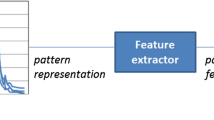Abstract
Artificial neural networks (ANNs) have been successfully applied to problems in different fields including medicine, management, and manufacturing. One major disadvantage of ANNs is that there is no systematic approach for model design. Most literature suggests a trial-and-error method for parameter setting which requires more time. The accuracy of the ANN model greatly depends on the network parameter settings including the number of neurons, momentum, learning rate, transfer function, and training algorithm. In this paper, we apply Taguchi’s design of experiments approach to determine the optimum set of parameters for an ANN trained using feed forward back-propagation. We present a case study of an equivalent stress prediction model for an automobile chassis to demonstrate the implementation of the approach. After training the network, the optimum values of the ANN parameters are determined according to the performance statistics. The performance of the ANN is superior using the Taguchi method to optimize the parameters compared with random parameter values.






Similar content being viewed by others
References
Patel, T.M., Bhatt, N.M.: Development of FEA-ANN hybrid model for equivalent stress prediction of automobile structural member. Autom. Control Comput. Sci. 50(5), 293–305 (2016)
Lefik, M., Schrefler, B.A.: Artificial neural network as an incremental non-linear constitutive model for a finite element code. Comput. Methods Appl. Mech. Eng. 192(28), 3265–3283 (2003)
Rao, H.S., Babu, B.R.: Hybrid neural network model for the design of beam subjected to bending and shear. Sadhana 32(5), 577–586 (2007)
Gudur, P.P., Dixit, U.S.: A neural network-assisted finite element analysis of cold flat rolling. Eng. Appl. Artif. Intell. 21(1), 43–52 (2008)
Castellani, M., Rowlands, H.: Evolutionary artificial neural network design and training for wood veneer classification. Eng. Appl. Artif. Intell. 22(4), 732–741 (2009)
Sholahudin, S., Han, H.: Simplified dynamic neural network model to predict heating load of a building using Taguchi method. Energy 115, 1672–1678 (2016)
Patel, T.M., Bhatt, N.M.: FEM based Taguchi method to reduce the automobile structural member weight. GIT-J. Eng. Technol. 8, 1–10 (2015)
Patel, T.M., Bhatt, N.M.: Development of a mathematical model of VMS for automotive structural member using FEA-RSM hybrid modeling. Procedia Technol. 23, 98–105 (2016)
Patel, T.M., Bhatt, N.M.: RSM and MLR model for equivalent stress prediction of Eicher 11.10 chassis frame: a comparative study. In: Proceedings of First International Conference on Information and Communication Technology for Intelligent Systems, Springer, Cham. 2, 387–395 (2016)
Stojanović, B., Vencl, A., Bobić, I., et al.: Experimental optimisation of the tribological behaviour of Al/SiC/Gr hybrid composites based on Taguchi’s method and artificial neural network. J. Braz. Soc. Mech. Sci. Eng. 40(6), 311 (2018)
Tortum, A., Yayla, N., Çelik, C., et al.: The investigation of model selection criteria in artificial neural networks by the Taguchi method. Physica A 386(1), 446–468 (2007)
Packianather, M.S., Drake, P.R., Rowlands, H.: Optimizing the parameters of multilayered feedforward neural networks through Taguchi design of experiments. Qual. Reliab. Eng. Int. 16(6), 461–473 (2000)
Roy, R.K.: Design of Experiments Using the Taguchi Approach: 16 Steps to Product and Process Improvement. Wiley, Hoboken (2001)
Kuo, C.F.J., Wu, Y.S.: Application of a Taguchi-based neural network prediction design of the film coating process for polymer blends. Int. J. Adv. Manuf. Technol. 27(5–6), 455–461 (2006)
Sukthomya, W., Tannock, J.: The optimisation of neural network parameters using Taguchi’s design of experiments approach: an application in manufacturing process modelling. Neural Comput. Appl. 14(4), 337–344 (2005)
Laosiritaworn, W., Chotchaithanakorn, N.: Artificial neural networks parameters optimization design of experiments: an application in materials modeling. Chiang Mai J. Sci. 36(1), 83–91 (2009)
Jung, J.R., Yum, B.J.: Artificial neural network based approach for dynamic parameter design. Expert Syst. Appl. 38(1), 504–510 (2011)
Madić, M.J., Radovanović, M.R.: Optimal selection of ANN training and architectural parameters using Taguchi method: a case study. FME Trans. 39(2), 79–86 (2011)
Kazancoglu, Y., Esme, U., Akkurt, A., et al.: Application of a Taguchi-based neural network for forecasting and optimization of the surface roughness in a wire-electrical-discharge machining process. Materiali in Tehnologije 46(5), 471–476 (2012)
Moosavi, V., Vafakhah, M., Shirmohammadi, B., et al.: Optimization of wavelet-ANFIS and wavelet-ANN hybrid models by Taguchi method for groundwater level forecasting. Arab. J. Sci. Eng. 39(3), 1785–1796 (2014)
Adalarasan, R., Santhanakumar, M., Thileepan, S.: Selection of optimal machining parameters in pulsed CO2 laser cutting of Al6061/Al2O3 composite using Taguchi-based response surface methodology (T-RSM). Int. J. Adv. Manuf. Technol. 93(1–4), 305–317 (2017)
Khoualdia, T., Hadjadj, A.E., Bouacha, K., et al.: Multi-objective optimization of ANN fault diagnosis model for rotating machinery using grey rational analysis in Taguchi method. Int. J. Adv. Manuf. Technol. 89(9–12), 3009–3020 (2017)
Padhi, S.K., Sahu, R.K., Mahapatra, S.S., et al.: Optimization of fused deposition modeling process parameters using a fuzzy inference system coupled with Taguchi philosophy. Adv. Manuf. 5(3), 231–242 (2017)
Sahare, S.B., Untawale, S.P., Chaudhari, S.S., et al.: Optimization of end milling process for Al2024-T4 aluminum by combined Taguchi and artificial neural network process. In: Soft Computing: Theories and Applications, Springer, Singapore, pp. 525–535 (2018)
Author information
Authors and Affiliations
Corresponding author
Rights and permissions
About this article
Cite this article
Patel, T.M., Bhatt, N.M. Optimizing Neural Network Parameters Using Taguchi’s Design of Experiments Approach: An Application for Equivalent Stress Prediction Model of Automobile Chassis. Automot. Innov. 1, 381–389 (2018). https://doi.org/10.1007/s42154-018-0045-5
Received:
Accepted:
Published:
Issue Date:
DOI: https://doi.org/10.1007/s42154-018-0045-5




